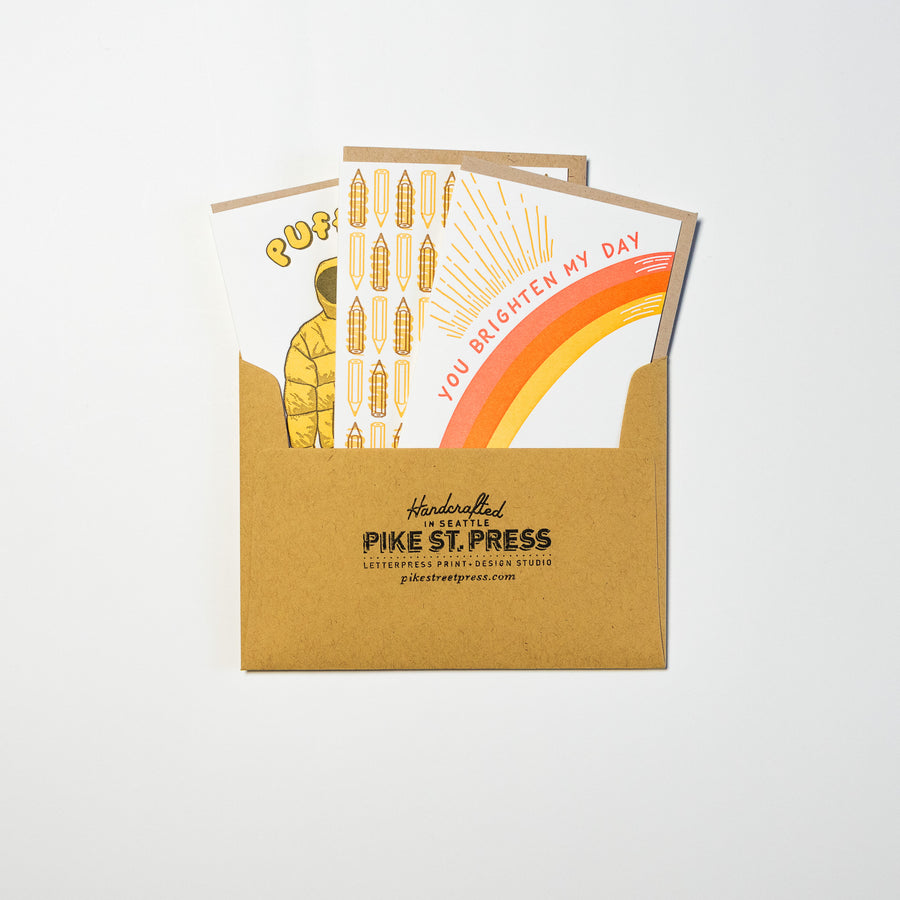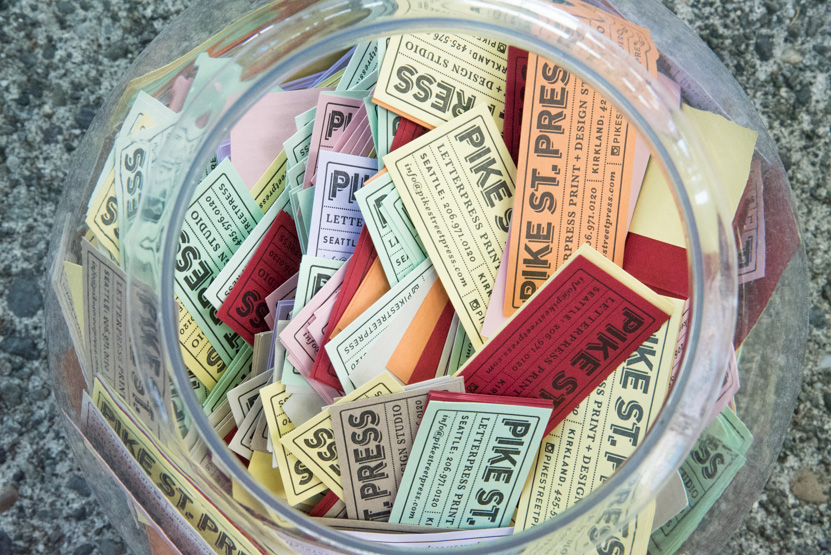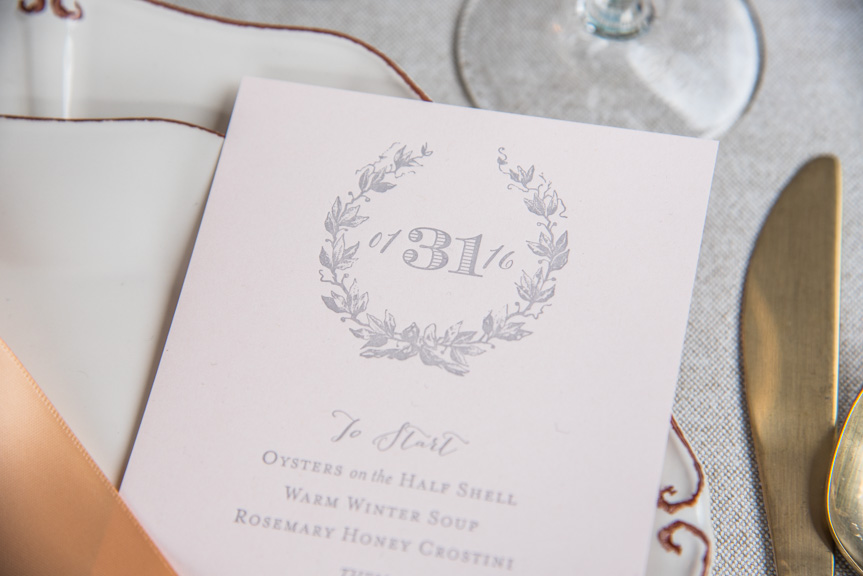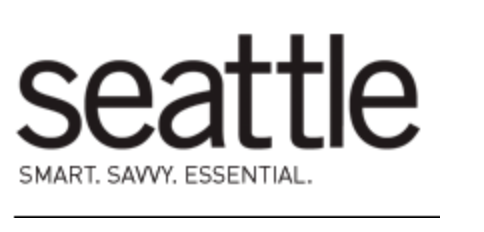Print Knowledge: Letterpress Terminology
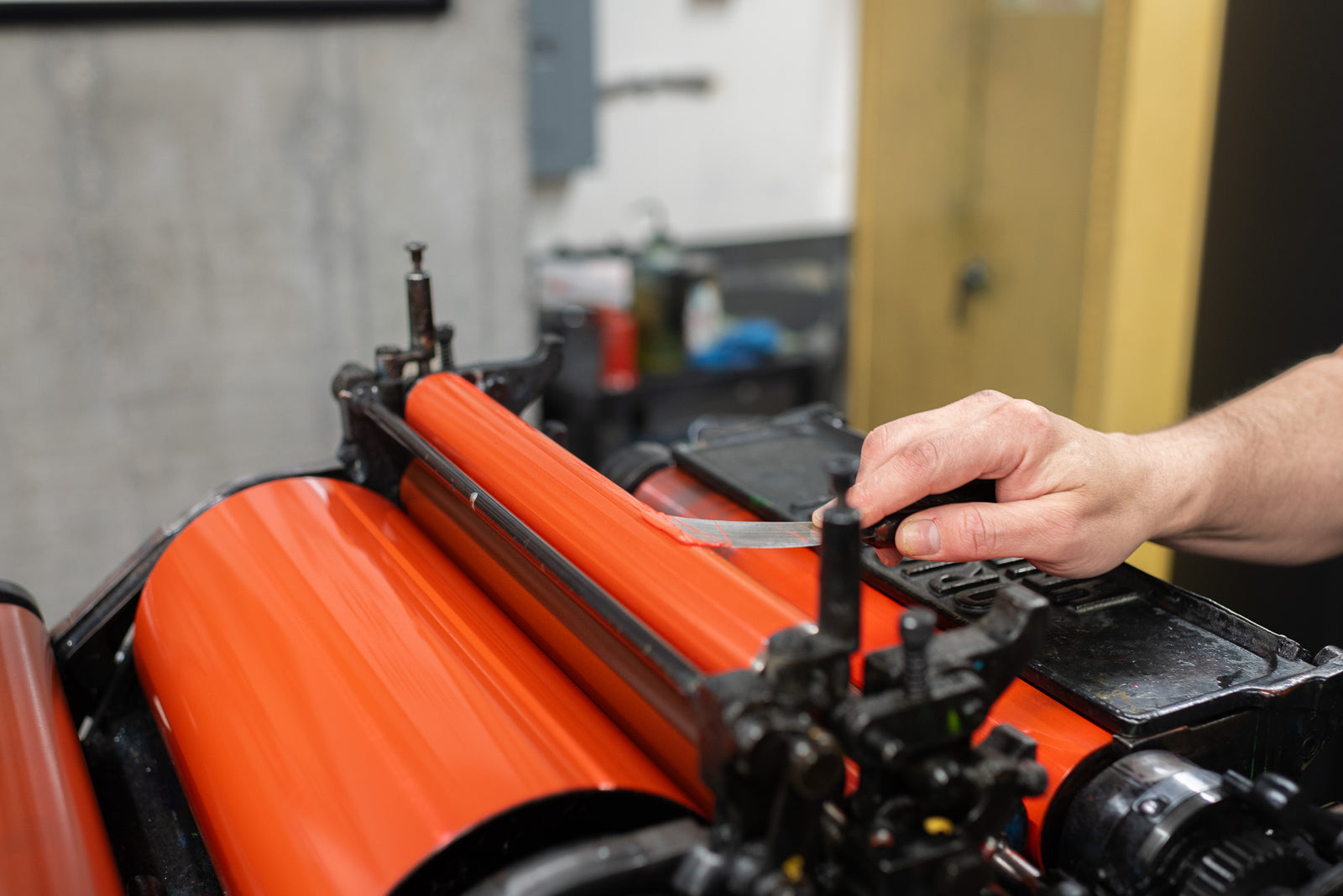
21 Common Letterpress Terms Every Designer Should Know
At Pike Street Press, we take pride in preserving the art of letterpress printing. Whether you’re a seasoned printer, a design enthusiast, or just curious about the craft, knowing the terminology can deepen your appreciation for the intricate process. Here are 21 commonly used letterpress printing terms to get you started:
Impression
The pressure applied by the press to transfer ink from the plate to the paper. Achieving the perfect impression is key to creating the tactile feel letterpress is known for.
Plate
A raised surface, often made of photopolymer or metal, that holds the design or type for printing.
Type High
The standard height of printing type and plates in the U.S., measuring exactly 0.918 inches. This ensures consistency across all letterpress projects.
Inking System
The mechanism that evenly distributes ink to the plate, ensuring smooth and consistent coverage.
Chase
A metal frame used to hold type and plates securely in position on the press.
Quoins
A wedge-shaped tools that lock type and plates in the chase, keeping everything tightly in place during printing.
Fountain
The component of the press that holds and distributes ink to the rollers.
Roller
Cylindrical tools that apply ink to the plate or type. Proper roller alignment is crucial for even ink distribution.
Makeready
The process of preparing the press for printing, including adjusting pressure, packing, and alignment to ensure the best results.
Packing
Layers of paper or other materials placed under the tympan to adjust the impression depth for optimal printing.
Tympan
The surface that holds the paper in position on the platen during printing.
Platen
The flat surface on the press that presses the paper against the plate to create an impression.
Lockup
The process of arranging and securing type and plates in the chase for stability during printing.
Slug
A piece of metal or plastic used to add spacing between lines of type.
Rule
Thin metal strips used to create straight lines in a design.
Gauge Pins
Pins or tabs used to align and secure the paper for accurate printing.
Blind Emboss
An impression made without ink, creating a raised or recessed design. This technique adds a subtle, elegant texture to printed pieces.
Kiss Impression
A light press impression that barely marks the paper. It’s often used for a delicate, refined look.
Deckle Edge
The natural, feathery edge of handmade or specialty papers, adding a touch of craftsmanship to the final piece.
Registration
The precise alignment of multiple colors or design elements. Accurate registration ensures clean, professional results.
Trapping
The intentional overlap of colors in a design to account for slight misalignments, ensuring smooth transitions between ink layers.
Why These Terms Matter
Understanding these terms isn’t just about jargon—it’s about connecting with the artistry behind each printed piece. At Pike Street Press, we strive to blend traditional techniques with modern design, ensuring every project is as unique as the craft itself.
Explore our custom printing services to see these techniques in action, or drop by our studio to learn more about the process of letterpress. Ready to bring your next project to life? Contact us today and let’s make something meaningful together!
